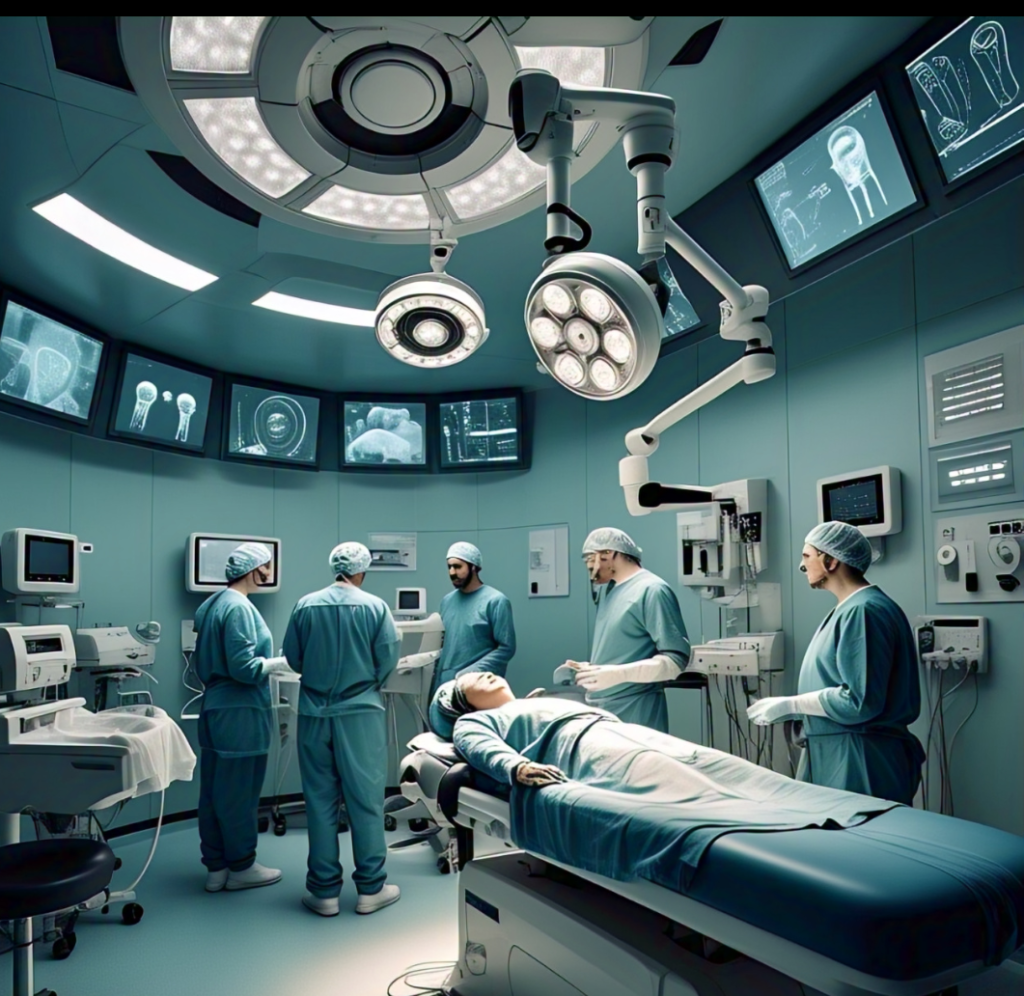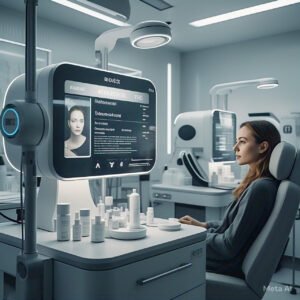The Future of Cosmetic Surgery and AI: Redefining Beauty with TechnologyWe are in an era where Artificial Intelligence (AI) is transforming industries, and cosmetic surgery is no exception. An area long based on human talent — a surgeon’s skill level, experience, and creative vision — is being transformed by AI, with all the implications that come with greater precision, personalized options, and patient

satisfaction.Gazing into the future, the union of AI and cosmetic surgery can really revolutionize the way aesthetic procedures are being conceptualized, carried out, and experienced. Let us view the wonderful ways in which AI is going to revolutionize the future of cosmetic surgery.—1. Personalized Consultations and Predictive AnalysisProbably the most exciting thing that AI brings to cosmetic surgery is hyper-personalized consultations. Already, patients had nothing more than the surgeon’s guarantee or simple photo

simulations upon which they would have to envision their looks post-surgery. AI-enabled imaging technology does something very different.How?Computer programs read a patient’s facial shape, color of the skin, and dimensions in order to produce highly realistic 3D “before-and-after” simulations. Patients can look at realistic outcomes of face-lifts, rhinoplasty, or liposuction before they even decide to have them.What is fascinating in this is the quantity of information that can be captured with AI — from the manner in which the skin would react to incisions, to face structures how they would find their natural positions upon healing. Besides making the patient more courageous, it also creates healthy expectations bettee out post-op dissatisfaction.—2. Robotic-Assisted Surgeries with AIWhile nothing is more valuable than human touch, robot systems based on artificial intelligence are soon to become an unavoidable assistance to cosmetic procedures.Machine-driven robot arms can accomplish intricate functions with precision superior to the human hand. In hair transplantation surgery, for instance, AI robots can locate the healthiest of the hair follicles and transfer them with accuracy accuracy — causing less trauma to the scalp and achieving natural hair growth patterns.Robots are also employed in facial sculpting procedures like jawline sculpting or eyelid surgery. These robots, programmed by AI, utilize micromovements that minimize the damage to the tissue, achieve higher recovery percentages, and end up with even more symmetrical results.—3. Creating Diagnostic Tools Safer for OperationsSafety remains the first issue in any consideration of surgery, and AI has taken the front seat when reducing risks and complications.Artificial intelligence systems can scan vast volumes of medical data — from the patient’s history to real-time intraoperative imaging — and spot patterns that would escape human notice. This is valuable to surgeons in that:Early risk identification: AI picks up on patients who are at higher risk for bad healing, allergic reaction, or infection.Tailor surgery to the individual: AI can recommend optimal sites and techniqu on a godor advanced procedures like reconstructive surgery.Also, AI-enhanced imaging can uncover what is below the surface — like scar tissue or damaged blood vessels beneath the surface that are not visible — so surgeons can adjust their technique for safer, more consistent outcomes.—4. AI for Non-Invasive and Minimally Invasive ProceduresNot everyone is as yet ready to go under the surgeon’s scalpel — and AI is also revolutionizing non-surgical beauty.Mobile phone apps that perform AI-based skin analysis can scan from fine lines to hyperpigmentation on the image of a patient’s skin. Treatment recommendations tailored to individual skin types — laser therapies, chemical peels, or intensive skincare regimes — are then offered according to the scan.AI also simplifies non-surgical treatments like Botox and fillers. Advanced computer programs monitor facial muscle activity, so injectors are able to precisely put Botox and fillers in the right places for harmonious, natural-looking results. This reduces the risk of “frozen” appearances and overcorrection.—5. Smarter Post-Operative RecoveryAI doesn’t end with surgery — it carries on to recovery.AI-based apps and wearables are changing post-operative care by:Monitoring important signs: Smart devices can measure temperature, heart rate, and infection indicators and alert doctors and patients to risk in real-time.Guiding recovery: Chatbots powered by AI offer coached recovery advice — from wound dressing directives to pill reminders.Monitoring progress of healing: By analyzing photos of healing wounds, AI can identify if a scar tissue is forming irregularly, allowing something to be addressed early on.This continuous, data-driven surveillance reduces recovery time and optimizes patients’ safety and comfort throughout recover Ethical Considerations: Balancing AI and Human JudgmentThough it has many benefits, AI cosmetic surgery raises grave ethical concerns.While AI is capable of imitating “perfect” results, it can perpetuate unrealistic expectations of beauty. Patients are far too concerned about AI-created pictures that are correct scientifically but are not aware of how the body heals on its own or the role self-esteem and emotional security have in achieving satisfaction.Surgeons will need to walk a tightrope — trusting in AI as an aide but not substituting the human compassion and reason behind every decision. AI has to support a surgeon’s insight, not augment it.Secondly, there has to be safeguarded data privacy. Scans of patients, clinical reports, and AI models need to be securely stored and used responsibly so as to ensure confidentiality.The Road Ahead: What’s Next?In the years ahead, the potential for AI in plastic surgery appears endless:AI-based virtual reality (VR): Think of test-driving a “virtual face” before a facelift — AI-VR hybrid will bring this into reality, with even more realistic result

simulations.Emotionally intelligent AI: Future AI could potentially gauge a patient’s psychological preparedness for surgery, enabling physicians to treat body dysmorphia or unrealistic expectations before proceeding.Real-time AI assistants: AI can provide real-time feedback to surgeons in real time, adjusting lighting, suggesting stitch placement, or warning of potential complications along the way.—Conclusion: A Symbiosis of Art and AIThe future of AI in cosmetic surgery is not substituting the surgeon but equipping him or her with superior technology that optimizes precision, personalization, and patient attention.AI will continue to reshape business — providing better forecasts, safer practices, and smarter recoveries — but human touch will always be up to date. And that’s because real beauty is not always in perfect symmetry but in confidence,

individuality, and the skilled hand of a generous surgeon.With advancing technology, its future is brightest where the possibilities of the human and AI move hand in hand to redefine beauty in visionary and bold new language.—You’d like me to customize this blog for a readership of interest — say, patients, surgeons, or developers of AI technologies? Let’s do that and add a special twist





